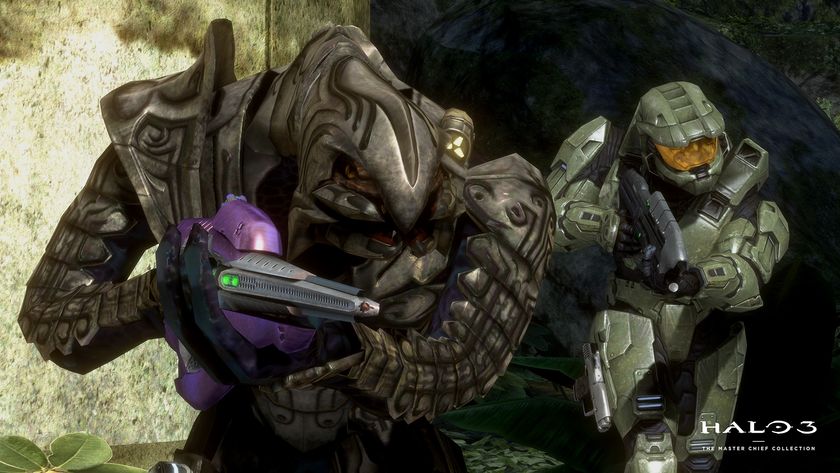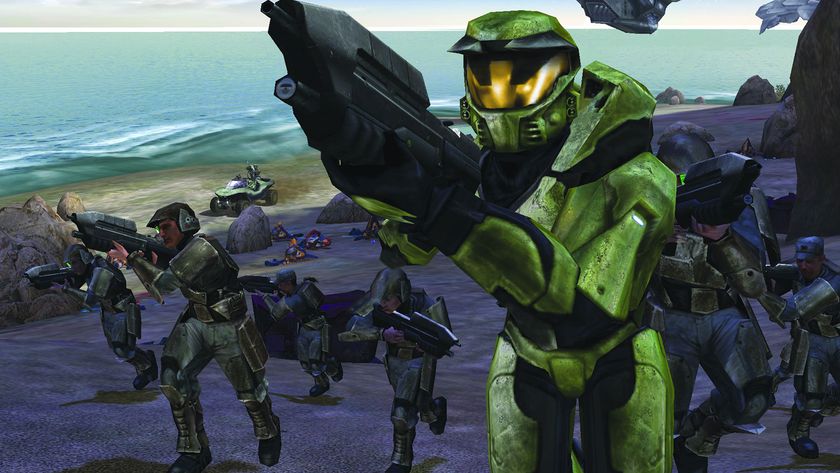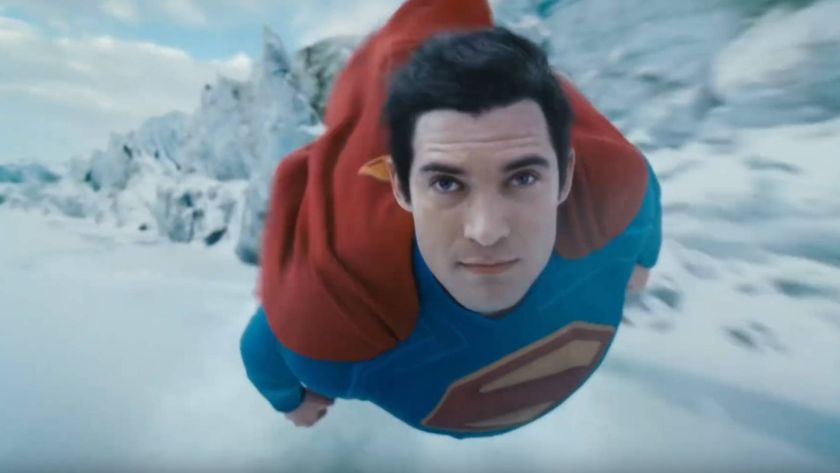Halo Reach's huge battles and new guns
Inside Bungie's last hurrah, and the biggest Halo ever
The Covenant have also received upgrades to ensure their energy weapons aren’t overshadowed by the rattling machine guns and ejecting brass of the Spartan forces. Plasma shots hit home with meaty thuds, and continue burning for a moment while stuck to their target, giving visual and audio feedback that leaves players in no doubt why their shield has been obliterated.
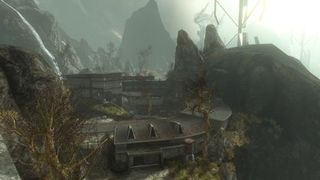
One of the new alien weapons, the Needler Rifle, combines elements of the old Covenant Carbine and the homing pink mist of the Needler, which sounds like a particularly deadly combination for mid-range headshots. On the human side, the new all-purpose weapon is called the DMR – Designated Marksman Rifle – and replaces the trusty Battle Rifle of Halo 3 as the go-to gun for anything less than sniper distances.
There are new enemies to go with the new guns, in the form of Skirmishers – they look like bigger, nastier versions of Jackals, with feathery manes and a penchant for stalking in packs. Even the once-comical Grunts look like a force to be reckoned with in the gritty new world of Reach, and everyone’s favourite old foes, the Elites, take their rightful place at the head of a Brute-free, non-English-speaking, alien army.
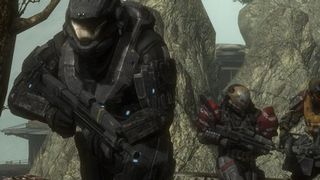
Since the protagonist is tougher than the characters in ODST, but not quite as hard as Master Chief, the health system is pitched somewhere between the two. The shield is slower to recharge than in Halo 3, and there’s an underlying health bar that will, presumably, need to be topped up via med packs – like much of Halo Reach, all of this is still subject to regular tweaking and testing, as the Bungie team search for the optimum settings.
Ever since the scene shortly after crash landing in the very first game, where Master Chief rounded a corner and was presented by a battlefield of then unprecedented scale for an FPS, the Halo franchise has been renowned for putting players in the midst of convincingly huge fights. Reach promises to take things further still, with an engine that can handle up to 40 AI combatants and 20 vehicles on screen at once. If those numbers don’t seem particularly impressive, remember that’s potentially 40 fully active Covenant warriors, hunting in packs, communicating, flanking and firing at you.
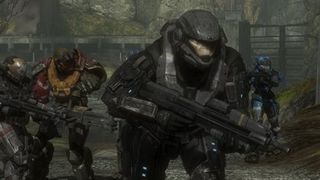
Outside of the player’s immediate sphere of influence, distant battles play out using lower level AI and flocking behaviour designed to look as close as possible to the real thing. Only once you’re within range do these enemies become sentient. The effect is that you’re a participant in war on a grand scale. Everything you can possibly hit with a gun is fighting back with the kind of smartness that has often given the best battles in Halo games the kind of emergent unpredictability you so rarely see in more strictly scripted shooters.
Not only are the battles more heavily populated than ever before, the environments that contain them are spread over a wider area. In missions where there are multiple objectives, you’ll often be free to choose the order in which you tackle them.
Sign up to the 12DOVE Newsletter
Weekly digests, tales from the communities you love, and more
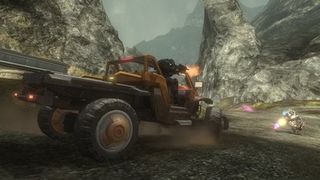
If you’re playing a four-man co-op Campaign with friends, the game engine can cope with everybody splitting up and doing their own thing, at least to a certain degree. You might take a buddy to clean up a nest of Covenant snipers in one area, then see the other two players fighting in the distance, down on the main battlefield. As in Halo 3, you’ll be able to take a party of friends through all of the game’s modes, including Theatre, Forge and some as-yet unannounced additions to Campaign that Bungie are planning in order to add replay value.
Martin Kitts is a veteran of the video game journalism field, having worked his way up through the ranks at N64 magazine and into its iterations as NGC and NGamer. Martin has contributed to countless other publications over the years, including 12DOVE, GamesMaster, and Official Xbox Magazine.
